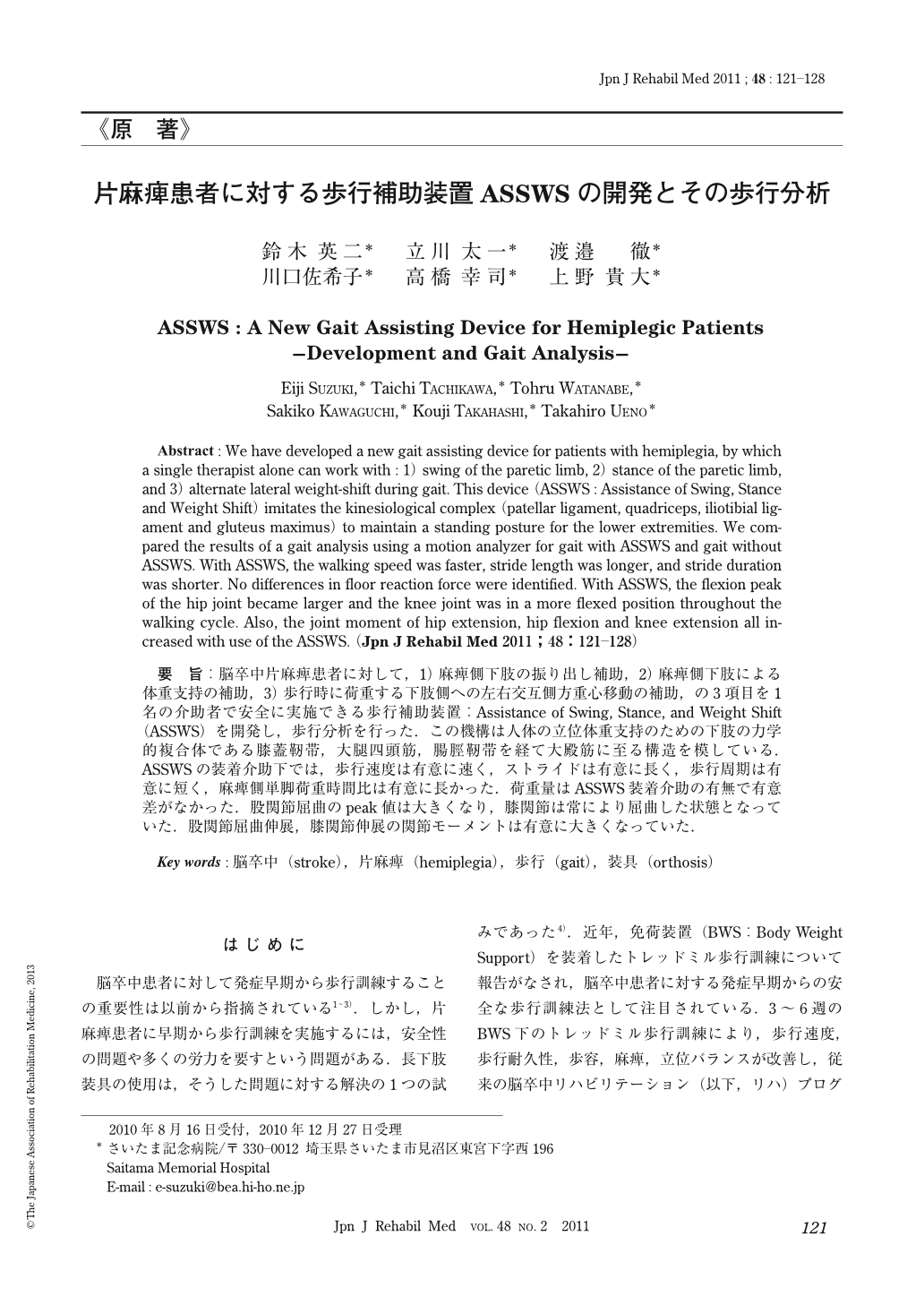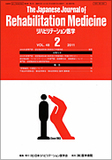Japanese
English
- 販売していません
- Abstract 文献概要
- 1ページ目 Look Inside
- 参考文献 Reference
要旨:脳卒中片麻痺患者に対して,1)麻痺側下肢の振り出し補助,2)麻痺側下肢による体重支持の補助,3)歩行時に荷重する下肢側への左右交互側方重心移動の補助,の3項目を1名の介助者で安全に実施できる歩行補助装置:Assistance of Swing, Stance, and Weight Shift(ASSWS)を開発し,歩行分析を行った.この機構は人体の立位体重支持のための下肢の力学的複合体である膝蓋靭帯,大腿四頭筋,腸脛靭帯を経て大殿筋に至る構造を模している.ASSWSの装着介助下では,歩行速度は有意に速く,ストライドは有意に長く,歩行周期は有意に短く,麻痺側単脚荷重時間比は有意に長かった.荷重量はASSWS装着介助の有無で有意差がなかった.股関節屈曲のpeak値は大きくなり,膝関節は常により屈曲した状態となっていた.股関節屈曲伸展,膝関節伸展の関節モーメントは有意に大きくなっていた.
Abstract : We have developed a new gait assisting device for patients with hemiplegia, by which a single therapist alone can work with : 1)swing of the paretic limb, 2)stance of the paretic limb, and 3)alternate lateral weight-shift during gait. This device (ASSWS : Assistance of Swing, Stance and Weight Shift) imitates the kinesiological complex (patellar ligament, quadriceps, iliotibial ligament and gluteus maximus) to maintain a standing posture for the lower extremities. We compared the results of a gait analysis using a motion analyzer for gait with ASSWS and gait without ASSWS. With ASSWS, the walking speed was faster, stride length was longer, and stride duration was shorter. No differences in floor reaction force were identified. With ASSWS, the flexion peak of the hip joint became larger and the knee joint was in a more flexed position throughout the walking cycle. Also, the joint moment of hip extension, hip flexion and knee extension all increased with use of the ASSWS.

Copyright © 2011, The Japanese Association of Rehabilitation Medicine. All rights reserved.


